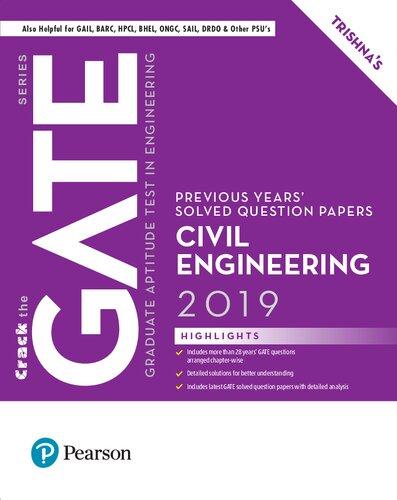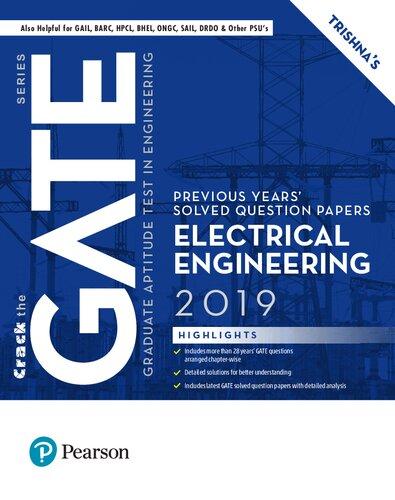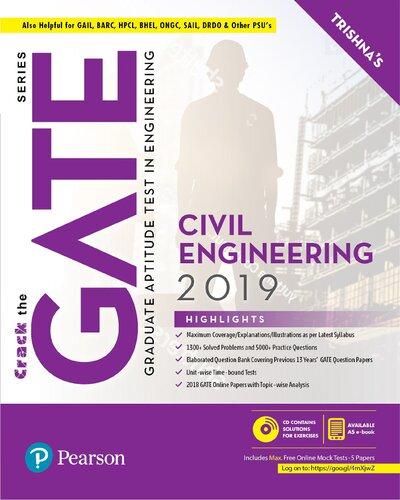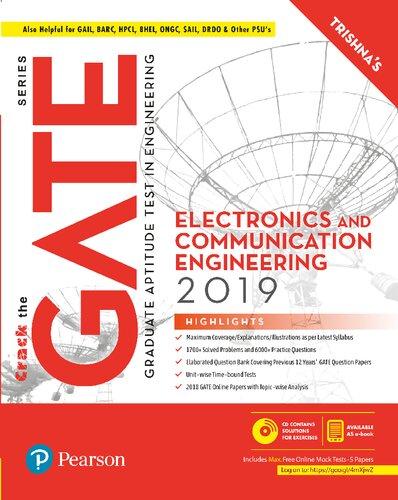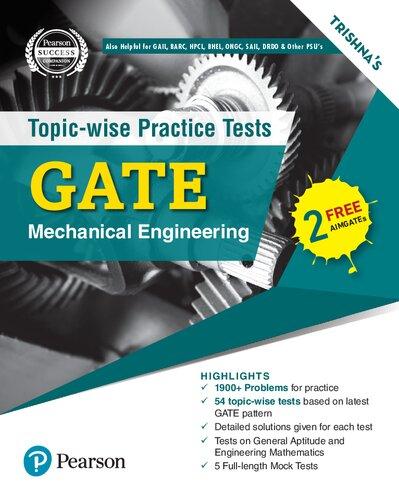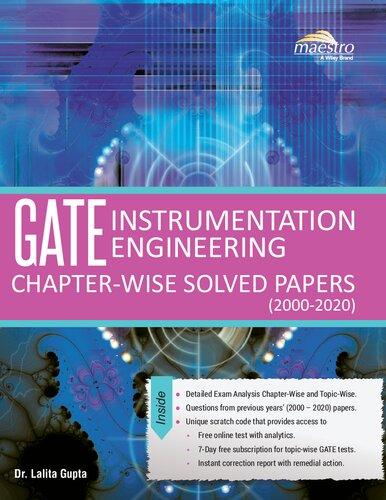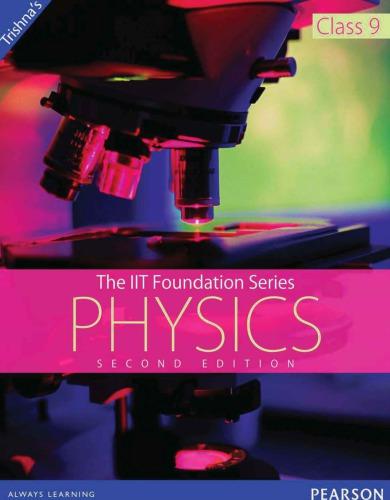Syllabus: Civil Engineering
Section 1: engineering MatheMaticS
Linear Algebra: Matrix algebra; Systems of linear equations; Eigen values and Eigen vectors.
Calculus: Functions of single variable; Limit, continuity and differentiability; Mean value theorems, local maxima and minima, Taylor and Maclaurin series; Evaluation of definite and indefinite integrals, application of definite integral to obtain area and volume; Partial derivatives; Total derivative; Gradient, Divergence and Curl, Vector identities, Directional derivatives, Line, Surface and Volume integrals, Stokes, Gauss and Green’s theorems.
Ordinary Differential Equation (ODE): First order (linear and non-linear) equations; higher order linear equations with constant coefficients; Euler-Cauchy equations; Laplace transform and its application in solving linear ODEs; initial and boundary value problems.
Partial Differential Equation (PDE): Fourier series; separation of variables; solutions of one-dimensional diffusion equation; first and second order one-dimensional wave equation and two-dimensional Laplace equation.
Probability and Statistics: Definitions of probability and sampling theorems; Conditional probability; Discrete Random variables: Poisson and Binomial distributions; Continuous random variables: normal and exponential distributions; Descriptive statistics - Mean, median, mode and standard deviation; Hypothesis testing.
Numerical Methods: Accuracy and precision; error analysis. Numerical solutions of linear and non-linear algebraic equations; Least square approximation, Newton’s and Lagrange polynomials, numerical differentiation, Integration by trapezoidal and Simpson’s rule, single and multi-step methods for first order differential equations.
Section 2: StrUctUral engineering
Engineering Mechanics: System of forces, free-body diagrams, equilibrium equations; Internal forces in structures; Friction and its applications; Kinematics of point mass and rigid body; Centre of mass; Euler’s equations of motion; Impulse-momentum; Energy methods; Principles of virtual work.
Solid Mechanics: Bending moment and shear force in statically determinate beams; Simple stress and strain relationships; Theories of failures; Simple bending theory, flexural and shear stresses, shear centre; Uniform torsion, buckling of column, combined and direct bending stresses.
Structural Analysis: Statically determinate and indeterminate structures by force/energy methods; Method of superposition; Analysis of trusses, arches, beams, cables and frames; Displacement methods: Slope deflection and moment distribution methods; Influence lines; Stiffness and flexibility methods of structural analysis.
Construction Materials and Management: Construction Materials: Structural steel-composition, material properties and behaviour; Concrete—constituents, mix design, short-term and long-term properties; Bricks and mortar; Timber; Bitumen. Construction Management: Types of construction projects; Tendering and construction contracts; Rate analysis and standard specifications; Cost estimation; Project planning and network analysis—PERT and CPM.
Concrete Structures: Working stress, Limit state and Ultimate load design concepts; Design of beams, slabs, columns; Bond and development length; Prestressed concrete; Analysis of beam sections at transfer and service loads.
Steel Structures: Working stress and Limit state design concepts; Design of tension and compression members, beams and beam-columns, column bases; Connections—simple and eccentric, beam-column connections, plate girders and trusses; Plastic analysis of beams and frames.
Section 3: geotechnical engineering
Soil Mechanics: Origin of soils, soil structure and fabric; Three-phase system and phase relationships, index properties; Unified and Indian standard soil classification system; Permeability—one dimensional flow, Darcy’s law; Seepage through soils—two-dimensional flow, flow nets, uplift pressure, piping; Principle of effective stress, capillarity, seepage force and quicksand condition; Compaction in laboratory and field conditions; One-dimensional consolidation, time rate of consolidation; Mohr’s circle, stress paths, effective and total shear strength parameters, characteristics of clays and sand.
Foundation Engineering: Sub-surface investigations—scope, drilling bore holes, sampling, plate load test, standard penetration and cone penetration tests; Earth pressure theories—Rankine and Coulomb; Stability of slopes—finite and infinite slopes, method of slices and Bishop’s method; Stress distribution in soils—Boussinesq’s and Westergaard’s theories, pressure bulbs; Shallow foundations—Terzaghi’s and Meyerhoff ’s bearing capacity theories, effect of water table; Combined footing and raft foundation; Contact pressure; Settlement analysis in sands and clays; Deep foundations—types of piles, dynamic and static formulae, load capacity of piles in sands and clays, pile load test, negative skin friction.
Section 4: Water reSoUrceS engineering
Fluid Mechanics: Properties of fluids, fluid statics; Continuity, momentum, energy and corresponding equations; Potential flow, applications of momentum and energy equations; Laminar and turbulent flow; Flow in pipes, pipe networks; Concept of boundary layer and its growth.
Hydraulics: Forces on immersed bodies; Flow measurement in channels and pipes; Dimensional analysis and hydraulic similitude; Kinematics of flow, velocity triangles; Basics of hydraulic machines, specific speed of pumps and turbines; Channel Hydraulics—Energy-depth relationships, specific energy, critical flow, slope profile, hydraulic jump, uniform flow and gradually varied flow.
Hydrology: Hydrologic cycle, precipitation, evaporation, evapo-transpiration, watershed, infiltration, unit hydrographs, hydrograph analysis, flood estimation and routing, reservoir capacity, reservoir and channel routing, surface run-off models, ground water hydrology - steady state well hydraulics and aquifers; Application of Darcy’s law.
Irrigation: Duty, delta, estimation of evapo-transpiration; Crop water requirements; Design of lined and unlined canals, head works, gravity dams and spillways; Design of weirs on permeable foundation; Types of irrigation systems, irrigation methods; Water logging and drainage; Canal regulatory works, cross-drainage structures, outlets and escapes.
Section 5: environMental engineering
Water and Waste Water: Quality standards, basic unit processes and operations for water treatment. Drinking water standards, water requirements, basic unit operations and unit processes for surface water treatment, distribution of water. Sewage and sewerage treatment, quantity and characteristics of wastewater. Primary, secondary and tertiary treatment of wastewater, effluent discharge standards. Domestic wastewater treatment, quantity of characteristics of domestic wastewater, primary and secondary treatment. Unit operations and unit processes of domestic wastewater, sludge disposal.
Air Pollution: Types of pollutants, their sources and impacts, air pollution meteorology, air pollution control, air quality standards and limits.
Municipal Solid Wastes: Characteristics, generation, collection and transportation of solid wastes, engineered systems for solid waste management (reuse/recycle, energy recovery, treatment and disposal).
Noise Pollution: Impacts of noise, permissible limits of noise pollution, measurement of noise and control of noise pollution.
Section 6: tranSportation engineering
Transportation Infrastructure: Highway alignment and engineering surveys; Geometric design of highways—crosssectional elements, sight distances, horizontal and vertical alignments; Geometric design of railway track; Airport runway length, taxiway and exit taxiway design.
Highway Pavements: Highway materials—desirable properties and quality control tests; Design of bituminous paving mixes; Design factors for flexible and rigid pavements; Design of flexible pavement using IRC: 37—2012; Design of rigid pavements using IRC: 58—2011; Distresses in concrete pavements.
Traffic Engineering: Traffic studies on flow, speed, travel time—delay and O-D study, PCU, peak hour factor, parking study, accident study and analysis, statistical analysis of traffic data; Microscopic and macroscopic parameters of traffic flow, fundamental relationships; Control devices, signal design by Webster’s method; Types of intersections and channelization; Highway capacity and level of service of rural highways and urban roads.
Section 7: geoMaticS engineering
Principles of surveying; Errors and their adjustment; Maps scale, coordinate system; Distance and angle measurement - Levelling and trigonometric levelling; Traversing and triangulation survey; Total station; Horizontal and vertical curves.
Photogrammetry scale, flying height; Remote sensing basics, platform and sensors, visual image interpretation; Basics of Geographical information system (GIS) and Geographical Positioning system (GPS).
GATE 2018 Solved Paper
CE: Civil Engineering
Set – 1
Total Marks:100.0
WronganswerforMCQwillresultinnegativemarks,(-1/3)for1MarkQuestionsand(-2/3)for2MarksQuestions.
General Aptitude
Number of Questions: 10
Q.1 to Q.5 carry 1 mark each and Q.6 to Q.10 carry 2 marks each.
Question Number: 1
Question Type: NAT
Tower A is 90 m tall and tower B is 140 m tall. They are 100 m apart. A horizontal skywalk connects the floors at 70 m in both the towers. If a taut rope connects the top of tower A to the bottom of tower B, at what distance (in meters) from tower A will the rope intersect the skywalk?
Solution:
Section Marks: 15.0
Solution: From the table, we can write down the following equations:
Let MN to the skywalk, with M on tower A, N on tower B. DAOM DNOC. The corresponding sides are in the ratio 2 : 7 \ MO == 2 9 100 200 9 () mm.
Question Number: 2
Question Type: MCQ
The temperature T in a room varies as a function of the outside temperature T0 and the number of persons in the room p, according to the relation T = K(θp + T0), where θ and K are constants. What would be the value of θ given the following data?
Hence, the correct option is (B)
Question Number: 3 Question Type: MCQ
“The driver applied the ______ as soon as she approached the hotel where she wanted to take a ______.”
(A) brake, break (B) break, break (C) brake, brake (D) break, brake
Solution: The apt words for the two blanks are “brake” (a device for slowing or stopping a moving vehicle, typically by applying pressure to the wheels.) and “break” (a pause in work or during an activity or event.).
Hence, the correct option is (A)
Question Number: 4
Question Type: MCQ
“It is no surprise that every society has had codes of behaviour; however, the nature of these codes is often ______.”
(A) Unpredictable (B) Simple (C) Expected (D) Strict
Solution: The sentence says that every society does have codes of behaviour. It adds (note the word “however”) that the codes also have a characteristic. The characteristic can only be that it is “unpredictable”
Hence, the correct option is (A)
Question Number: 5 Question Type: MCQ
Hema’s age is 5 years more than twice Hari’s age. Suresh’s age is 13 years less than 10 times Hari’s age. If Suresh is 3 times as old as Hema, how old is Hema?
(A) 14 (B) 17 (C) 18 (D) 19
Solution: Let Hari’s age be x. Hema’s is 2x + 5. Suresh’s is 10x – 13
Given 10x – 13 = 3 (2x + 5) = 6x + 15
⇒ 4x = 28 ⇒ x = 7
Hema’s age = 2x + 5 = 19.
Hence, the correct option is (D)
Question Number: 6
Question Type: MCQ
Consider a sequence of numbers a1, a2, a3, …, a n where a n = 11 2 nn + , for each integer n > 0. What is the sum of the first 50 terms?
Solution: Each letter represents a unique integer. In a general situation, this means two things.
(1) If a letter occurs more than once, it represents the same integer in each occurrence. (then part is not directly relevant, as each letter occurs only once.)
(2) Different letters represent different integers.
There are 7 letters and 3 products to be considered. The integers A, C, D, F, G occur in only one of the 3 products while B, E occur in 2 products. If we use 5, the units digit of the product would be 5 or 0. Such a product can be obtained only by using 5. (as we can choose only integer from 1 to 9). We can’t have 3 products ending in 0 or 5. Therefore, we cannot use 5. Hence, the correct option is (B)
Question Number: 8 Question Type: MCQ
Which of the following function(s) is an accurate description of the graph for the range(s) indicated?
\ The sum of these
Hence, the correct option is (C)
Question Number: 7
Question Type: MCQ
Each of the letters arranged as below represents a unique integer from 1 to 9. The letters are positioned in the figure such that (A × B × C), (B × G × E) and (D × E × F) are equal. Which integer among the following choices cannot be represented by the letters A, B, C, D, E, F or G?
(i) y = 2x + 4 for –3 ≤ x ≤ –1
(ii) y = |x – 1| for –1 ≤ x ≤ 2
(iii) y = ||x| – 1| for –1 ≤ x ≤ 2
(iv) y = 1 or 2 ≤ x ≤ 3
(A) (i), (ii) and (iii) only. (B) (i), (ii) and (iv) only. (C) (i) and (iv) only. (D) (ii) and (iv) only.
Solution: There are 4 parts: –3 to –1, –1 to 1, –1 to 2, and 2 to 3
For –3 ≤ x ≤ –1, y = 2x + 4
For –1 ≤ x ≤ 1, y = 1 – x = –(x – 1) =−|| x 1
For 1 ≤ x ≤ 2, y = x – 1
For 2 ≤ x ≤ 3, y = 1
We see that i, ii, iv are true. Hence, the correct option is (B)
(A) 4 (B) 5 (C) 6 (D) 9
Question Number: 9
Question Type: MCQ
A fruit seller sold a basket of fruits at 12.5% loss. Had he sold it for `108 more, he would have made a 10% gain. What is the loss in Rupees incurred by the fruit seller? (A) 48 (B) 52 (C) 60 (D) 108
Solution: The difference between 12.5% loss and 10% profit (i.e 22.5%) is `108. Therefore, 100%, = 100
22 5 108 480 . () =
12.5% is 1/5 and 1/8 of 480 is 60.
Hence, the correct option is (C)
Question Number: 10 Question Type: MCQ
The price of a wire made of a super alloy material is proportional to the square of its length. The price of 10 m length of the wire is `1600. What would be the total price (in `) of two wires of lengths 4 m and 6 m? (A) 768 (B) 832 (C) 1440 (D) 1600
Solution: The price of wire of length l is Kl2 . For l = 10 m, the price is `1600 1600 = K (100) ⇒ K = 16.
l = 4 ⇒ p = 16(16) = 256
l = 6 ⇒ p = 16(36) = 576
\ The total price of the two pieces is 832.
Hence, the correct option is (B)
Civil Engineering
Number of Questions: 55
Q.11 to Q.25 carry 1 mark each and Q.26 to Q.65 carry 2 marks each.
Question Number: 11 Question Type: MCQ
Which one of the following matrices is singular?
Solution: Orthogonal matrix is
Section Marks: 85.0
So it is singular.
Hence, the correct option is (C)
Question Number: 12
For the given orthogonal matrix Q,
Question Type: MCQ
Since Q is orthogonal, inverse of Q
Hence, the correct option is (C)
Question Number: 13
Question Type: MCQ
At the point x = 0, the function f(x) = x3 has
(A) Local maximum
(B) Local minimum
(C) Both local maximum and minimum
(D) Neither local maximum nor local minimum
Solution: We know that f(x) = x3
⇒ ′ = fxx () 3 2
′ =⇒ =⇒ = fxxx () 03 00 2
\ x = 0 is a critical value of f(x) ′′ = fxx () 6
Now at x = 0, ′′ = fx() 0 and ′′′ =≠ fx() 60
This signifies that f(x) has neither local maximum nor local minimum at x = 0
Hence, the correct option is (D)
Question Number: 14
Question Type: MCQ
A column of height h with a rectangular cross-section of size a × 2a has a buckling load of P. If the cross-section is changed to 0.5a × 3a and its height changed to 1.5h, the buckling load of the redesigned column will be (A) P/12 (B) P/4 (C) P/2 (D) 3P/4
Solution: Buckling load for existing column P
Buckling load for new column = P′ =
Hence, the correct option is (A)
Question Number: 15
Question Type: MCQ
A steel column of ISHB 350 @72.4 kg/m is subjected to a factored axial compressive load of 2000 kN. The load is transferred to a concrete pedestal of grade M20 through a square base plate. Consider bearing strength of concrete as 0.45fck, where fck is the characteristic strength of concrete. Using limit state method and neglecting the self weight of base plate and steel column, the length of a side of the base plate to be provided is (A) 39 cm (B) 42 cm (C) 45 cm (D) 48 cm
Solution: As we know that Area of base plate = Factored load Bearing
Side of base plate = 222222 22 47.14 cm 48 cm.
Hence, the correct option is (D)
Question Number: 16 Question Type: MCQ
The Le Chatelier apparatus is used to determine (A) compressive strength of cement (B) fineness of cement (C) setting time of cement (D) soundness of cement
Solution: We know that soundness of cement s determined by lechatlier apparatus. Hence, the correct option is (D)
Question Number: 17 Question Type: MCQ
The deformation in concrete due to sustained loading is (A) creep (B) hydration (C) segregation (D) shrinkage
Solution: We know that creep is deformation of concrete due to sustained loading. Hence, the correct option is (A)
Question Number: 18 Question Type: MCQ
A solid circular beam with radius of 0.25 m and length of 2 m is subjected to a twisting moment of 20 kNm about the z-axis at the free end, which is the only load acting as shown in the figure. The shear stress component t xy at Point ‘M’ in the cross-section of the beam at a distance of 1 m from the fixed end is
(A) 0.0 MPa (B) 0.51 MPa (C) 0.815 MPa (D) 2.0 MPa
Solution: The below figure describes the Stress condition for point M τxy = 0 Point M
We know that t xy represents the shear stress at free surface therefore it will be zero.
Hence, the correct option is (A)
Question Number: 19
Question Type: MCQ
Two rectangular under-reinforced concrete beam sections X and Y are similar in all aspects except that the longitudinal compression reinforcement in section Y is 10% more. Which one of the following is the correct statement?
(A) Section X has less flexural strength and is less ductile than section Y
(B) Section X has less flexural strength but is more ductile than section Y
(C) Sections X and Y have equal flexural strength but different ductility
(D) Sections X and Y have equal flexural strength and ductility
Solution: Y is Under-reinforced than X because section Y has more compression steel compared to Section X. The neutral axis of section Y is above the neutral axis of section X. Therefore we conclude that ductility of Y is more and also the flexural resistance of Y is more. Hence, the correct option is (A)
Question Number: 20
Question Type: MCQ
The percent reduction in the bearing capacity of a strip footing resting on sand under flooding condition (water level at the base of the footing) when compared to the situation where the water level is at a depth much greater than the width of footing, is approximately (A) 0 (B) 25 (C) 50 (D) 100
Solution: We know that Terzaghi’s bearing capacity equation is given as QCNDNB cfN q =+ + γγ γ 05 .
C = 0 for cohesion less soil. Also fooling is resting on sand surface therefore Depth of fooling, D = 0
For water level is at base of fooling
qBuN 1 05 = ′ . γγ
For water level at much greater depth
qB utN 2 05 = γγ
As ′ γγ 50% sat (or) ′ γγ 50% t
Hence, the correct option is (C)
Question Number: 21
Question Type: MCQ
The width of a square footing and the diameter of a circular footing are equal. If both the footings are placed on the surface of sandy soil, the ratio of the ultimate bearing capacity of circular footing to that of square footing will be (A) 4/3 (B) 1 (C) 3/4 (D) 2/3
Solution: We know that for square footing qu = CNC + rDf N q + 0.4rBN r Also for circular footing qu = CNC + rDfNq + 0.3rBN r () () . q q rDfNqrBNr rDfNqrBNr
3 4
Hence, the correct option is (C)
Question Number: 22 Question Type: MCQ
Bernoulli’s equation is applicable for (A) Viscous and compressible fluid flow
(B) Inviscid and compressible fluid flow
(C) Inviscid and incompressible fluid flow
(D) Viscous and incompressible fluid flow
Solution: As we know that Bernoulli’s equation is applicable for inviscid and incompressible fluid flow.
Hence, the correct option is (C)
Question Number: 23 Question Type: MCQ
There are 20,000 vehicles operating in a city with an average annual travel of 12,000 km per vehicle. The NOx emission rate is 2.0 g/km per vehicle. The total annual release of NO x will be
(A) 4,80,000 kg (B) 4,800 kg
(C) 480 kg (D) 48 kg
Solution: number of kms per vehicle
= 12000 km
NO x emission per vehicle annually will be = 2 × 12000
= 24000 g = 24 g
Annual release of NO x = 24 × 20000 = 480000 kg
Hence, the correct option is (A)
Question Number: 24 Question Type: MCQ
A bitumen sample has been graded as VG30 as per IS : 73-2013. The ‘30’ in the grade means that
(A) Penetration of bitumen at 25°C is between 20 and 40
(B) Viscosity of bitumen at 60°C is between 2400 and 3600 Poise
(C) Ductility of bitumen at 27°C is more than 30 cm
(D) Elastic recovery of bitumen at 15°C is more than 30%
Solution: As per IS:73-1950
Hence, the correct option is (B)
Question Number: 25
Question Type: MCQ
The speed-density relationship for a road section is shown in the figure.
Density Speed
The shape of the flow-density relationship is (A) piecewise linear (B) parabolic (C) initially linear then parabolic (D) initially parabolic then linear
Solution: Consider the speed density relationship given below.
Density
We conclude that speed decreases as the density increases. Therefore, the plot for flow density curve is generally given by a parabola.
Density Flow
the graph of speed-density is as given below Density Speed
We can observe that speed is constant for certain time and then decreases linearly . Therefore the flow-density graph will be linear for certain time and then becomes parabolic.
Linear Parabolic
Hence, the correct option is (C)
Question Number: 26
Question Type: MCQ
A well-designed signalized intersection is one in which the (A) crossing conflicts are increased (B) total delay is minimized (C) cycle time is equal to the sum of red and green times in all phases (D) cycle time is equal to the sum of red and yellow times in all phases
Solution:
Hence, the correct option is (B)
Question Number: 27
Question Type: NAT
A flow field is given by u = y2 , v = –xy, w = 0. Value of the z-component of the angular velocity (in radians per unit time, up to two decimal places) at the point (0, –1, 1) is
Solution:
Question Number: 28 Question Type: NAT
The frequency distribution of the compressive strength of 20 concrete cube specimens is given in the table.
f (MPa) Number of specimens with compressive strength equal to f
If m is the mean strength of the specimens and σ is the standard deviation, the number of specimens (out of 20) with compressive strength less than m – 3σ is ______.
Solution: Mean strength
Standard deviation strength
No. of samples less than m – 3σ = 0.
Hence, the answer is 0
Question Number: 29
Question Type: NAT
In a fillet weld, the direct shear stress and bending tensile stress are 50 MPa and 150 MPa, respectively. As per IS 800: 2007, the equivalent stress (in MPa, up to two decimal places) will be ______.
Solution: We know that the equivalent stress should be less than f u
Hence, the answer is 12.36
Question Number: 32
Question Type: NAT
A 1:50 model of a spillway is to be tested in the laboratory. The discharge in the prototype spillway is 1000 m3/s. The corresponding discharge (in m3/s, up to two decimal places) to be maintained in the model, neglecting variation in acceleration due to gravity, is ______.
Solution: According to foude’s law
Hence, the answer is 173.2 MPa
Question Number: 30
Question Type: NAT
In a shrinkage limit test, the volume and mass of a dry soil pat are found to be 50 cm3 and 88 g, respectively. The specific gravity of the soil solids is 2.71 and the density of water is 1 g/cc. The shrinkage limit (in %, up to two decimal places) is ______.
Solution: Dry density of soil mass ed(rho) = M V d d = 88 50 gm/cc
Shrinkage limit w s =
Hence, the answer is 19.9
Question Number: 31
Question Type: NAT
A core cutter of 130 mm height has inner and outer diameters of 100 mm and 106 mm, respectively. The area ratio of the core cutter (in %, up to two decimal places) is ______.
Solution: Heigth of corecutter = 130 mm and ha
Inner diameter of corecutter = 100 mm outer diameter of corecutter = 106 mm.
Hence, the answer is 0.06
Question Number: 33
Question Type: NAT
A 10 m wide rectangular channel carries a discharge of 20 m3/s under critical condition. Using g = 9.81 m/s2, the specific energy (in m, up to two decimal places) is ______.
Solution: Specific energy Ey
Hence, the answer is 1.11
Question Number: 34
Question Type: NAT
For routing of flood in a given channel using the Muskingum method, two of the routing coefficients are estimated as C0 = –0.25 and C1 = 0.55. The value of the third coefficient C2 would be ______.
Solution: Muskinghum method proposes that C0 + C1 + C2 = 1
\ –0.25 + 0.55 + C2 = 1 C2 = 0.7
Question Number: 35
Question Type: NAT
A city generates 4 × 106 kg of municipal solid waste (MSW) per year, out of which only 10% is recovered/recycled and the rest goes to landfill. The landfill has a single lift of 3 m height and is compacted to a density of 550 kg/m3. If 80% of the landfill is assumed to be MSW, the landfill area (in m2, up to one decimal place) required would be ______.
Solution: Weight of MSW generated by city = 40 × 106kg/yr
Weight of MSW in landfill = 0.9 × 40 × 106 kg/yr = 36 × 106 kg/yr
Compacted density = 0.500 kg/m3
Compacted volume of MSW = × = 36 10 550 65454 54 6 .m /year 3
Total landfill volume = volume of MSW + volume of cover
As given volume of MSW = 0.8 × total landfill volume
Volume of cover = 0.2 × total landfill volume
\ Total landfill volume == 65454 54 08 81818 18 . .m /year 3
Height of landfill = 3 m
Area of landfill == 81818 187 3 27272 7 . .m /year. 3
Question Number: 36 Question Type: MCQ
The value of the integral
p2/8
dx is
Hence, the correct option is (B)
Question Number: 37 Question Type: MCQ
A cantilever beam of length 2 m with a square section of side length 0.1 m is loaded vertically at the free end. The vertical displacement at the free end is 5 mm. The beam is made of steel with Young’s modulus of 2.0 × 1011 N/m2. The maximum bending stress at the fixed end of the cantilever is (A) 20.0 MPa (B) 37.5 MPa (C) 60.0 MPa (D) 75.0 MPa
Solution: Deflection δ = PL El 3 3
Hence, the correct option is (B)
Question Number: 38 Question Type: MCQ
A cylinder of radius 250 mm and weight, W = 10 kN is rolled up an obstacle of height 50 mm by applying a horizontal force P at its centre as shown in the figure.
All interfaces are assumed frictionless. The minimum value of P is (A) 4.5 kN (B) 5.0 kN (C) 6.0 kN (D) 7.5 kN
Solution: Consider the figure given below
Weight of cylinder W = 10 kN
We know that for rolling the normal reaction should be zero when the cylinder just starts to roll.
BD = ADAB22 22 250 200 −= () ()
BD = 150 mm
Taking 2MD = 0, P × 200 – W × 150 = 0 \ P = 7.5 kN
Hence, the correct option is (D)
Question Number: 39
Question Type: MCQ
A plate in equilibrium is subjected to uniform stresses along its edges with magnitude σ xx = 30 MPa and σ yy = 50 MPa as shown in the figure. y x = 50 MPa σyy = 30 MPa σxx
The Young’s modulus of the material is 2 × 1011 N/m2 and the Poisson’s ratio is 0.3. If σ zz is negligible small and assumed to be zero, then the strain e zz is (A) –120 × 10–6 (B) –60 × 10–6 (C) 0.0 (D) 120 × 10–6
Solution:
= + µ σσ Exxyy() = × += −× 03 210 30
Hence, the correct option is (A)
Question Number: 40
Question Type: MCQ
The figure shows a simply supported beam PQ of uniform flexural rigidity EI carrying two moments M and 2M.
The slope at P will be (A) 0 (B) ML/(9EI) (C) ML/(6EI) (D) ML/(3EI)
Solution: RR LM El ML l 12 1 23 6 += ×× = ∈
Hence, the correct option is (C)
Question Number: 41
Question Type: MCQ
A 0.5 m × 0.5 m square concrete pile is to be driven in a homogeneous claycy soil having undrained shear strength c u = 50 kPa and unit weight, g = 18.0 kN/m3. The design capacity of the pile is 500 kN. The adhesion factor a is given as 0.75. The length of the pile required for the above design load with a factor of safety of 2.0 is (A) 5.2 m (B) 5.8 m (C) 11.8 m (D) 12.5 m
Solution: Qup = 9c × B2 + a c (4BL) = 1000 kN
1000 = (9 × 5 × 0.52) + (0.75 × 50 × 4 × 0.5L)
⇒ L = 11.83m.
Hence, the correct option is (C)
Question Number: 42 Question Type: MCQ
A closed tank contains 0.5 m thick layer of mercury (specific gravity = 13.6) at the bottom. A 2.0 m thick layer of water lies above the mercury layer. A 3.0 m thick layer of oil (specific gravity = 0.6) lies above the water layer. The space above the oil layer contains air under pressure. The gauge pressure at the bottom of the tank is 196.2 kN/m2. The density of water is 1000 kg/m3 and the acceleration due to gravity is 9.81 m/s2. The value of pressure in the air space is (A) 92.214 kN/m2 (B) 95.644 kN/m2 (C) 98.922 kN/m2 (D) 99.321 kN/m2
Solution: Total gauge pressure at the bottom of the tank = Pressure of air + Pressure of oil + Pressure of water + Pressure of Mercury.
196.2 × 103 = (0.6 × 103 × 9.81 × 3) + (9.81 × 103 × 2) + (13.6 × 103 × 9.81 × 0.5) + pair
\ Pair = 92.214 kN/m2.
Hence, the correct option is (A)
Question Number: 43
Question Type: MCQ
A rapid sand filter comprising a number of filter beds is required to produce 99 MLD of potable water. Consider water loss during backwashing as 5%, rate of filtration as 6.0 m/h and length to width ratio of filter bed as 1.35. The width of each filter bed is to be kept equal to 5.2 m. One additional filter bed is to be provided to take care of breakdown, repair and maintenance. The total number of filter beds required will be (A) 19 (B) 20 (C) 21 (D) 22
Solution: Total water to be filtered = (99MLD) + 5 100 99 ×
MLD = 103.95 MLD
Also we know that L B = 1.35
Since B = 5.2 m therefore length of each filter L = 1.35 × 5.2 = 7.02 m
Surface area of each filter = 7.02 × 5.2 = 36.5 m2
Total surface area required = Discharge through filter Rate of filtration = × × = 103 95 10 624 721 8 3 . .m 2
Total no. of working units required == 72 18 36 5 19 7 . 20 filters.
The total number of filter beds required will be = 20 + 1 = 21 units.
Question Number: 44
Question Type: MCQ
A priority intersection has a single-lane one-way traffic road crossing an undivided two-lane two-way traffic road. The traffic stream speed on the single-lane road is 20 kmph and the speed on the two-lane road is 50 kmph. The perception-reaction time is 2.5 s, coefficient of longitudinal friction is 0.38 and acceleration due to gravity is 9.81 m/s2
A clear sight triangle has to be ensured at this intersection. The minimum lengths of the sides of the sight triangle
along the two-lane road and the single-lane road, respectively will be (A) 50 m and 20 m (B) 61 m and 18 m (C) 111 m and 15 m (D) 122 m and 36 m
Solution:
Consider the figure given below 20 kmph
The minimum length of side of sight triangle for two lane
61m.
The minimum length of side of side of sight triangle for a single lane road is SSD2 = Vt V gf + 2 2
(20 × 5/18) × 2.5 +
Hence, the correct option is (B)
Question Number: 45 Question Type: MCQ
The following details refer to a closed traverse:
The length and direction (whole circle bearing) of closure, respectively are
(A) 1 m and 90° (B) 2 m and 90° (C) 1 m and 270° (D) 2 m and 270°
Solution: For close traverse
(B) with c
\ By D’ Alembert’s formula, the
, we have c2 = 1
S latitude = 101 + 419 – 437–83 = 0
S departure = 173 + 558 – 96 – 634 = 1
Hence departure closure is 1 m, WCB = 90°
Hence, the correct option is (A)
Question Number: 46
Question Type: MCQ
A square area (on the surface of the earth) with side 100 m and uniform height, appears as 1 cm2 on a vertical aerial photograph. The topographic map shows that a contour of 650 m passes through the area. If focal length of the camera lens is 150 mm, the height from which the aerial photograph was taken, is
(A) 800 m (B) 1500 m (C) 2150 m (D) 3150 m
Solution: Area on earth = 100 × 100 m2
Area on photo = 1 cm2
We know that
Scale = 1 cm = 100 m
Total length = 150 mm
⇒ H = 2150 m.
Hence, the correct option is (C)
Question Number: 47
Question Type: MCQ
The solution at x = 1, t = 1 of the partial differential equation
= 25
subject to initial conditions of u(0) = 3x and ∂ ∂ u t (0) = 3 is ______. (A) 1 (B)
Therefore, the solution at x = 1, t = 1 is u(1, 1) = 3 × 1 + 3 × 1 = 6.
Hence, the correct option is (D)
Question Number: 48 Question Type: NAT
The solution (up to three decimal places) at x = 1 of the differential equation dy dx 2 2 + 2 dy dxy = 0 subject to boundary conditions y(0) = 1 and dy dx ) = –1 is ______.
Solution: Given differential equation is dy
Applying Laplace transform on both sides of (1),
Hence, the answer is 0.3679
Question Number: 49
Question Type: NAT
Variation of water depth (y) in a gradually varied open channel flow is given by the first order differential equation
() ()
Given initial condition: y(x = 0) = 0.8 m. The depth (in m, up to three decimal places) of flow at a downstream section at x = 1 m from one calculation step of Single Step Euler Method is ______.
Solution: Gradually varied flow 10 3 ln () y
At x = 0, y = 0.8 m dy dxx = = =− 0 1 104 162 1 0 0068 . Since dy dx is –ve, it is a falling profile Now dy dx y = 08 1 . = –0.00622
\ y = 0 .793 m [upto 3 decimal places] y x y = 0.793 m
Hence, the answer is 0.793
Question Number: 50
Question Type: NAT
An RCC short column (with lateral ties) of rectangular cross section of 250 mm × 300 mm is reinforced with four numbers of 16 mm diameter longitudinal bars. The grades of steel and concrete are Fe415 and M20, respectively. Neglect eccentricity effect. Considering limit state
of collapse in compression (IS 456 : 2000), the axial load carrying capacity of the column (in kN, up to one decimal place), is ______.
Solution:
Hence, the answer is 815 to 830
Question Number: 51 Question Type: NAT
An RCC beam of rectangular cross section has factored shear of 200 kN at its critical section. Its width b is 250 mm and effective depth d is 350 mm. Assume design shear strength t c of concrete as 0.62 N/mm2 and maximum allowable shear stress t c,max in concrete as 2.8 N/mm2. If two legged 10 mm diameter vertical stirrups of Fe250 grade steel are used, then the required spacing (in cm, up to one decimal place) as per limit state method will be ______.
Solution: Spacing S v = fAsd vs yv 087 υ = ×× ×× × 0872 50 350 2 4 10 2 .. π υ vs = (2.286 – 0.62) × 250 × 250 = 145.75 kN =
= 8.2 cm.
Hence, the answer is 8.2
Question Number: 52 Question Type: NAT
The dimensions of a symmetrical welded I-section are shown in the figure.
(All dimensions are in mm) 6.1 9
The plastic section modulus about the weaker axis (in cm3, up to one decimal place) is ______.
Solution:
Hence, the answer is 89.9
Question Number: 53
Question Type: NAT
Consider the deformable pin-jointed truss with loading, geometry and section properties as shown in the figure.
Given that E = 2 × 1011 N/m2, A = 10 mm2, L = 1 m and P = 1 kN. The horizontal displacement of Joint C (in mm, up to one decimal place) is ______.
Solution:
The dlip @ C, d c = ε pkl AE
Take ε v = 0 RRp AB+= 3
MRpp AB =− ×+ ×+ ×= 02 0 , Rp B =↑ ⎡ ⎣ ⎤ ⎦ 3
Rpp A =− =↓ ⎡
= 0 , FBC = RB = 3pc
HFHpc ABB == = [] 0,
v = 0 , Fp AC sin θ = Fp AC == 1 2
FpT AC = [] 2
Now Analyse the trust by placing unit concentrated load in HZL dirn @ C
kcH ABB = [] = 1
kcR BCB = [] = 1 kAC =↑ ⎡ ⎣ ⎤ ⎦ 2
\ d c in hkl dirn is 2.70 mm Hence, the answer is 2.70 mm
Question Number: 54 Question Type: NAT
At a construction site, a contractor plans to make an excavation as shown in the figure.
The water level in the adjacent river is at an elevation of +20.0 m. Unit weight of water is 10 kN/m3. The factor of safety (up to two decimal places) against sand boiling for the proposed excavation is ______.
Solution: Factor of safety
of water level
Hence, the answer is 1
Question Number: 55
Question Type: NAT
A conventional drained triaxial compression test was conducted on a normally consolidated clay sample under an effective confining pressure of 200 kPa. The deviator stress at failure was found to be 400 kPa. An identical specimen of the same clay sample is isotropically consolidated to a confining pressure of 200 kPa and subjected to standard undrained triaxial compression test. If the deviator stress at failure is 150 kPa, the pore pressure developed (in kPa, up to one decimal place) is ______.
Solution: For 1st specimen For 2nd specimen
σ3 200 = kPa
σd = 400 kPa
σ1 = 600 kPa
For undrained clay condition, for second specimen
(45° + f/2)
(350 – U) = (200 – U) tan2(45 + 30/2) ⇒ U = 125 kPa.
Hence, the answer is 125
Question Number: 56
Question Type: NAT
The void ratio of a soil is 0.55 at an effective normal stress of 140 kPa. The compression index of the soil is 0.25. In order to reduce the void ratio to 0.4, an increase in the magnitude of effective normal stress (in kPa, up to one decimal place) should be ______.
Solution: According to consolidation theory
Hence, the answer is
Question Number: 57 Question Type: NAT
A rigid smooth retaining wall of height 7 m with vertical backface retains saturated clay as backfill. The saturated unit weight and undrained cohesion of the backfill are 17.2 kN/m3 and 20 kPa, respectively. The difference in the active lateral forces on the wall (in kN per meter length of wall, up to two decimal places), before and after the occurrence of tension cracks is ______.
Solution: Let Initial active pressure be P a1 = 1 2 (40 + 80.4) × 2.349
Hence, the answer is 46.72
Question Number: 58
Question Type: NAT
Rainfall depth over a watershed is monitored through six number of well distributed rain gauges. Gauged data are given below
The Thiessen mean value (in mm, up to one decimal place) of the rainfall is ______.
Solution:
The theissen mean value of rainfall =
= 479.09 mm.
Hence, the answer is 479.09 mm
Question Number: 59
Question Type: NAT
The infiltration rate f in a basin under ponding condition is given by f = 30 + 10e–2t, where, f is in mm/h and t is time in hour. Total depth of infiltration (in mm, up to one decimal
